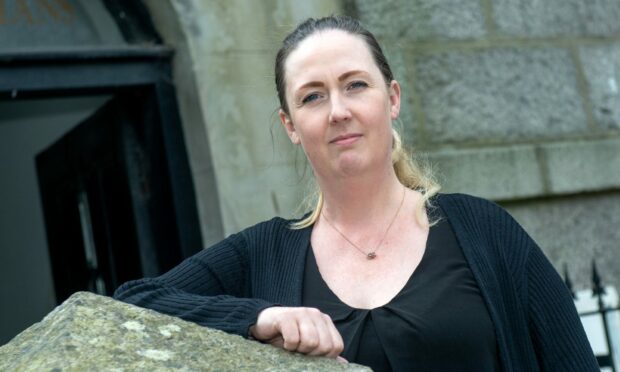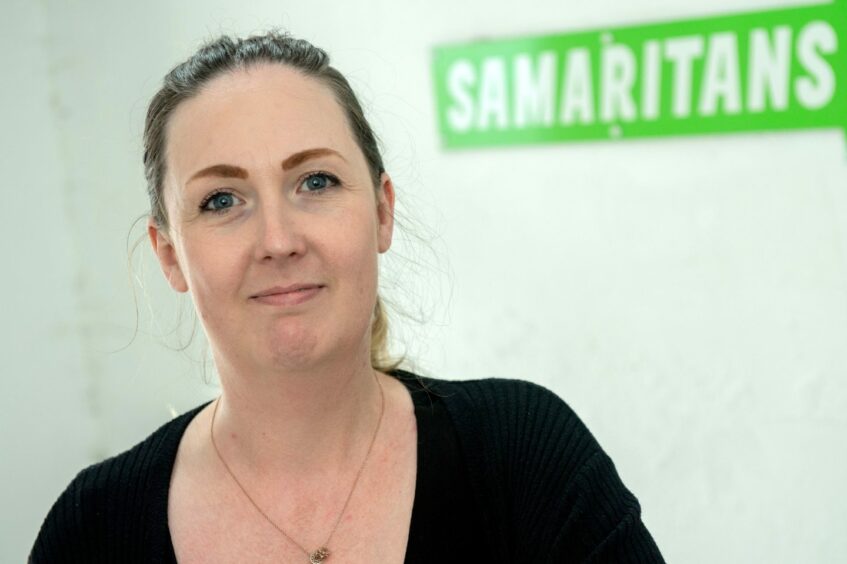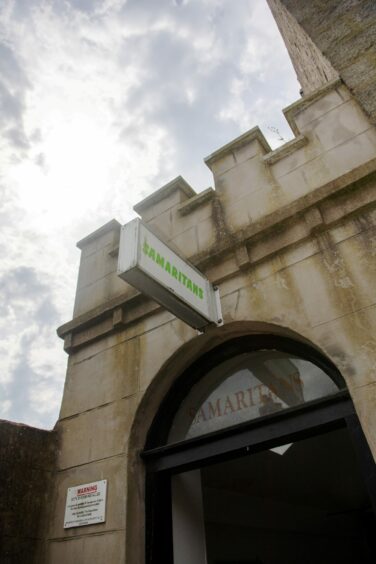It can take the best part of a year to train a Samaritan, allowing them to help all sorts of people – not just those who are suicidal.
Claire Forkes signed up to volunteer with the charity in Aberdeen last year, and is currently working through her probationary period.
And even with a background in mental health nursing, she found Samaritans’ approach requires a completely different set of skills.
She spoke to us about her experience with the charity so far, in the hope it might encourage others to follow in her footsteps.
What’s the training like for Samaritans in Aberdeen?
After applying and being accepted, Claire was placed on a six-week training course, via Zoom video calls, which began in February.
The weekly three-hour workshops covered the likes of active listening techniques, Q&As and preparation with example scenarios.
“We also went through a comprehensive workbook, which was really helpful – I still look at that now,” she explained.
Following the training, Claire was assigned a mentor to assist her during her first six shifts of taking calls at Samaritans’ base in Aberdeen.
The mentor was able to listen in to the conversations but, crucially, could not intervene in any way.
Their only communication during a call – if needed – would be to jot down a note with advice.
“That first call, I was really nervous,” Claire said.
“And I was conscious that someone was listening and I didn’t know what to expect.
“It was quite nerve-wracking, and I was nervous for the rest of that evening every time I switched my phone on.”
‘We don’t just help suicidal people’
Over time Claire began to ease into the role, and is now in the middle of her six-month probationary period.
“The training does prepare you, as much as it can do, that anything can happen,” she said.
“What struck me is that, for the people who are calling, you’re filling a gap somewhere in a bigger system where the support isn’t there or available at that time.
Whatever you’re going through, you don’t have to go it alone.
We’ll face it with you 💚 pic.twitter.com/0Uqpruc3b5
— Samaritans (@samaritans) June 10, 2022
“You’re not always dealing with immediately suicidal people, and I know some feel that’s not a good use of Samaritans’ time but you’ve helped ease whatever was troubling someone in that moment.
“That can be enough to get hem through to the next appointment or the next morning where they can speak to the person who normally helps them.”
The charity says around one-in-five calls it receives relate to suicidal feelings, and the “vast majority” of people are ringing to talk through other concerns.
‘Your role is to get down in the hole and sit beside them’
A lot of the Samaritans training focuses on active listening and responding to what’s being said, rather than thinking of the next question to ask.
“Lots of people think they’re good listeners – I certainly did,” Claire said.
“But this teaches you to sit back and not always think ‘what should I say next, what’s the solution?’
“It was completely paralysing because I couldn’t do the things that came naturally – problem solving and finding solutions.
“You’re not doing that – your role is to get down in the hole and sit beside them.
“You’re just listening, being open to whatever they might want to talk about – how it feels down there, or how they got to that point.
“It can be more difficult than it sounds, but it is empowering.”
- July 24, 2022
- July 24, 2022
- July 24, 2022



Conversation